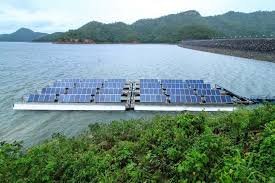This article has explored the symbiotic relationship between solar panels and water conservation, highlighting the reasons for integration, advantages of solar-powered water systems, and addressing common questions. Embracing solar energy for water conservation not only fosters environmental stewardship but also fosters resilience and prosperity in comm
In a world where sustainable practices are becoming increasingly vital, the marriage of solar energy and water conservation emerges as a powerful solution. This article delves into the synergy between solar panels and water conservation, exploring their profound impact, advantages, and frequently asked questions.

Understanding the Connection
Solar panels, renowned for generating clean energy from sunlight, play a pivotal role in water conservation. By harnessing solar power to pump water for irrigation, sanitation, and domestic use, communities can reduce reliance on fossil fuels and alleviate strain on water resources.

Harnessing Solar Power for Water Conservation
Using solar power to save water means using sunlight to run machines and systems that help us use water more carefully. For example, solar-powered pumps can pull water from the ground for farming without needing electricity. Also, solar energy can help turn salty seawater into fresh water, and it can power systems that deliver water right to plants’ roots, saving water by avoiding waste. This way, we can protect water and make sure there’s enough for everyone in the future.


Power of Sunshine
Solar panels, revered for their ability to harness the sun’s energy and convert it into electricity, serve as the cornerstone of modern renewable energy solutions. When applied to water conservation, solar technology becomes a catalyst for change, offering a sustainable alternative to traditional energy-intensive water pumping methods.
Reasons for Integration
Advantages of Solar-Powered Water Systems
Innovative Applications
Overcoming Challenges and Maximizing Impact
While the potential of solar panels in water conservation is vast, challenges such as intermittency of sunlight and upfront costs persist. However, technological advancements, coupled with supportive policies and community engagement, are key to overcoming these obstacles and unlocking the full potential of solar-powered water solutions.
Frequently Asked Questions (FAQs)
Conclusion
In conclusion, the integration of solar panels and water conservation presents a compelling solution to address the challenges of energy consumption and water scarcity. By leveraging solar power for water pumping and irrigation, communities can achieve sustainable development goals while safeguarding precious water resources for future generations.






